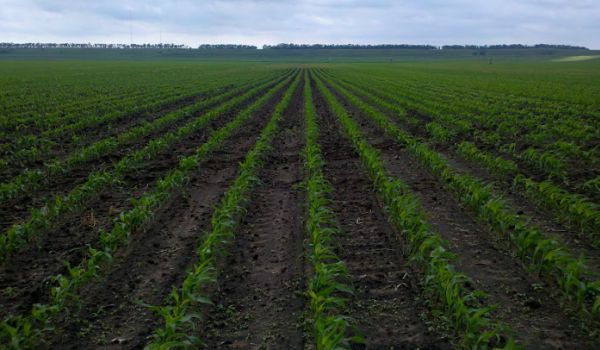Maximize Profits with Fertilizer Program and Plant Spacing

During the past few growing seasons, commodity prices have been the driving factor for decision making on the farm. This season, commodity prices take a backseat to yield – our top concern for profitability. Boosting your corn yields, even by a few bushels, can make up quite a bit of the difference in commodity prices.
How will you accomplish this? We’ve been discussing how to maximize profits through the basics of crop production. Paying specific attention to planting date, plant spacing, and fertility needs will help increase your profitability.
Planting date
You can gain 10-20 bushels per acre by planting early. Six years of data at PFS show a 10 bushel advantage by planting around May 1 versus May 15. After another two week delay, an additional five bushels are lost as June approaches. At this point, the possibility of higher moistures at harvest increases, which reduces profit.
Plant spacing
When planting in early May, plant to plant spacing should be a top priority. Having an evenly spaced population that emerges together can add 10 bushels per acre. Although equipment manufacturers are caving into farmer demand by creating planter equipment that can work at higher speeds, you still need to keep the planter under 5mph in order to achieve ideal accuracy when seeding. A smooth ride is required to maintain the consistent seed depth and spacing that is necessary for an ideal stand. We recommend that more than 80% of your plants are within 2” of their intended spacing. For example, an intended population of 34,000 plants in a 22” row should result in the plants being spaced 8.38” from each other. Plants should also be within one leaf of the neighboring plant. If the plants vary more than this, the smaller plant will be considered a weed and will rob resources from the “normal” plant.
Fertility needs
Do not cut your fertilizer program in order to save money. Nitrogen management and timing are critical with the variable soils in the Dakotas. We range from heavy, flat valley soils to rolling medium ground to beach sands. Each of these soil types needs its own management technique to apply fertilizer. In recent years, we have lost more bushels to denitrification and leaching than we have to drought conditions. I would rather miss high with fertilizer than not apply enough and lose potential bushels.
Analyze your soil tests and apply P &K accordingly. Tissue testing in the summer is a good practice, but remember nutrients are absorbed at differing levels over the growing season. A low soil test reading does not necessarily mean the plant is deficient of a nutrient at that time. Always sample from the spot in question and sample from a good spot in the field to compare results. Sulfur in the sulfate form is always recommended on lighter soils and should also be considered for a majority of soil types.
Focusing on the basics of crop production and performing them correctly can produce more bushels each year than trying a fancy new product that “guarantees” results. With an emphasis on planting date, planter accuracy, and fertility needs, you will be better equipped to fine tune your operation for a profitable 2014.











